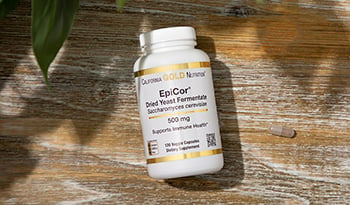Harness the Health Boosting Power of Plants with Polyphenols
DISCLAIMER:This blog does not intend to provide diagnosis...
- In this article:
- What Are Polyphenols?
- Types of Polyphenols
- Phenolic acids
- Stilbenes
- Lignans
- Flavonoids
- 6 Flavonoid Categories
- Health Benefits of Polyphenols
- 1. Help regulate blood sugar
- 2. Heart-healthy
- 3. Antioxidant and Anti-inflammatory Properties
- 4. Boost Brain Health
- 5. Promote Bone Health

You may not realize it, but you’ve certainly heard of polyphenols before. They’re regularly featured on news reports covering the latest superfoods. The reason that red wine and dark chocolate have developed reputations as being “good for you” is their polyphenol content.
But before you go loading up on the superfoods making the news, take some time to go beyond the headlines to get a more complete picture of what polyphenols are, where to find them, and what they can do for you.
Here’s the lowdown.
What Are Polyphenols?
Polyphenols are naturally occurring compounds found in plant foods like seeds, fruits, spices, legumes, and vegetables. These compounds give plants their color and serve a protective role–defending them against pests, infections, toxic chemicals, and ultraviolet radiation. Polyphenols also help to protect a plant against oxidative stress (which is the effect of harmful byproducts created during its normal chemical processes).
Types of Polyphenols
Polyphenols are grouped into four classes, based on their chemical structure.
Phenolic acids
These compounds are found abundantly in plant foods and are absorbed readily through the walls of your intestine. Tea, corn, grain, plums, grapes, berries, red wine, kiwi fruits, plums, apples, and cherries all contain phenolic acids.
Stilbenes
Usually synthesized by plants only in response to infection or injury, this class of polyphenols is not commonly found in the human diet. One of the best-known stilbenes is resveratrol with top food sources being red grapes, peanuts, and some berries. The resveratrol in grapes is primarily contained within the skin. Because red wine is fermented with grape skins for a longer period of time compared to white, red wine has more resveratrol.
Lignans
Food sources of lignans include fruits, grains, algae, legumes, cereals, and some vegetables. The richest natural source of lignans is flaxseed. It can be difficult to get a lot of lignans from eating unless you’re taking them in a dietary supplement. Some lignans are phytoestrogens, plant-based compounds that act like estrogen in the body.
Flavonoids
Flavonoids are plant compounds are responsible for the bright colors of fruits, leaves, flowers, and vegetables. Of the 8,000 polyphenols that have been identified in plant foods, 4,000 of them are in the flavonoid class.
6 Flavonoid Categories
Because there are so many varieties, flavonoids are divided into six sub-classes:
- Flavonols are known for their antioxidant properties. An antioxidant is a chemical compound that protects cells from the damaging effects of free radicals (molecules created as byproducts when the body breaks food down or is exposed to pollutants such as radiation or cigarette smoke). Found largely in the skin of fruits and vegetables, flavonols’ primary function is to defend plants against ultraviolet radiation. Quercetin is a common flavonoid belonging to this sub-class. Food sources include tea, kale, grapes, berries, onions, apples, lettuce, and tomatoes.
- Flavones act as natural pesticides, protecting leaves from harmful insects. These compounds are believed to play a role in relaxing constricted blood vessels. Dietary sources include red wine, fruit skins (including tomato), buckwheat, and red pepper.
- Flavanones have anti-inflammatory properties. They’re found in citrus foods like limes, lemons, oranges, and grapefruit.
- Flavanols (not to be confused with the flavonols) are commonly called catechins. Food sources include cacao, grapes, lychees, black tea, green tea, and strawberries.
- Anthocyanins give color to red, blue, and purple plants. They’re mainly found in the skin of berries (cranberries, blueberries, strawberries, blackberries), red or purple grapes, and red wine.
- Isoflavones may help keep estrogen levels balanced in your body. Similar to estrogen in chemical composition, not only can isoflavones increase low estrogen levels, they can also block the development of high levels. The primary dietary source is legumes like soybeans, peanuts, chickpeas, and fava beans.
Health Benefits of Polyphenols
Eating polyphenols appears to trigger a response in the body that creates a certain amount of stress resistance and cellular protection. Polyphenol compounds accomplish this with their antioxidant and anti-inflammatory properties. So, while plants use polyphenols to defend and preserve their health, you can consume these same compounds to your own health advantage. Here are some of the potential health benefits of polyphenols.
1. Help regulate blood sugar
Polyphenols like quercetin, resveratrol, and ferulic acid may affect blood sugar in different ways, which include blocking the absorption of glucose (sugar) in the gut or its uptake elsewhere throughout the body.
- The polyphenols in onions, especially quercetin, have been found to exhibit a strong anti-diabetic effect.
- Ferulic acid, a polyphenol found abundantly in vegetables and corn bran has been shown to enhance glucose uptake and can enhance the response to antidiabetic drugs.
- The lack of effective insulin plays a key role in the development of diabetes, and resveratrol may decrease insulin secretion and delay the onset of insulin resistance. Research on resveratrol also reveals its potential to inhibit diabetic changes in the kidney (a condition called diabetic nephropathy).
2. Heart-healthy
A polyphenol-rich diet may help to protect the heart. The polyphenols help defend cholesterol molecules against the damage caused by free radicals. By inhibiting this damage, polyphenols may prevent atherosclerosis (the condition where plaques build up in your arteries). Reducing inflammation and acting against platelets (cells that can stick together to form a blood clot) are a few other ways polyphenols can help boost your cardiovascular health.
- Research on quercetin shows that it may inhibit the rupture of atherosclerotic plaques which precedes the formation of blood clots.
- Catechins in tea have been shown to resist changes to the cells in artery walls, possibly helping to slow down the formation of a plaque.
- Studies on catechins in dark chocolate have demonstrated that these polyphenols may help to increase levels of HDL (the “good” cholesterol).
- Research reveals that consuming resveratrol in red wine or grape juice may keep platelets from gathering together to create a blood clot. Constriction of the coronary artery, causing a blockage to occur, may also be prevented with the consumption of red wine or grape juice.
3. Antioxidant and Anti-inflammatory Properties
Research has shown that polyphenols, specifically resveratrol, may have anti-carcinogenic effects due to their antioxidant properties. Resveratrol may also help to fight inflammation.
4. Boost Brain Health
Polyphenols may offer protective action on the brain because of their ability to cross the blood-brain barrier which controls the entry of substances into the brain.
- Research has shown that polyphenols may play a significant role in delaying the onset of Alzheimer’s disease.
- Studies reveal that ferulic acid in corn bran can be beneficial in Alzheimer’s disease because of its antioxidant and anti-inflammatory properties.
- Catechins have been shown to have a therapeutic role in the treatment of Parkinson’s disease due to antioxidant activity.
5. Promote Bone Health
Research continues to show that polyphenols can help slow down the decrease in bone mineral density that leads to osteoporosis. A study on genistein and daidzein suggested that supplementation with these isoflavones, which are found abundantly in legumes, can contribute to bone loss prevention.
Consuming a wide array of polyphenols in your diet—either in food or supplement form, or a combination of both—is a great way to boost your overall health and reduce your risk for developing certain health conditions.

 By Dr. Venus Ramos, M.D.
By Dr. Venus Ramos, M.D.


